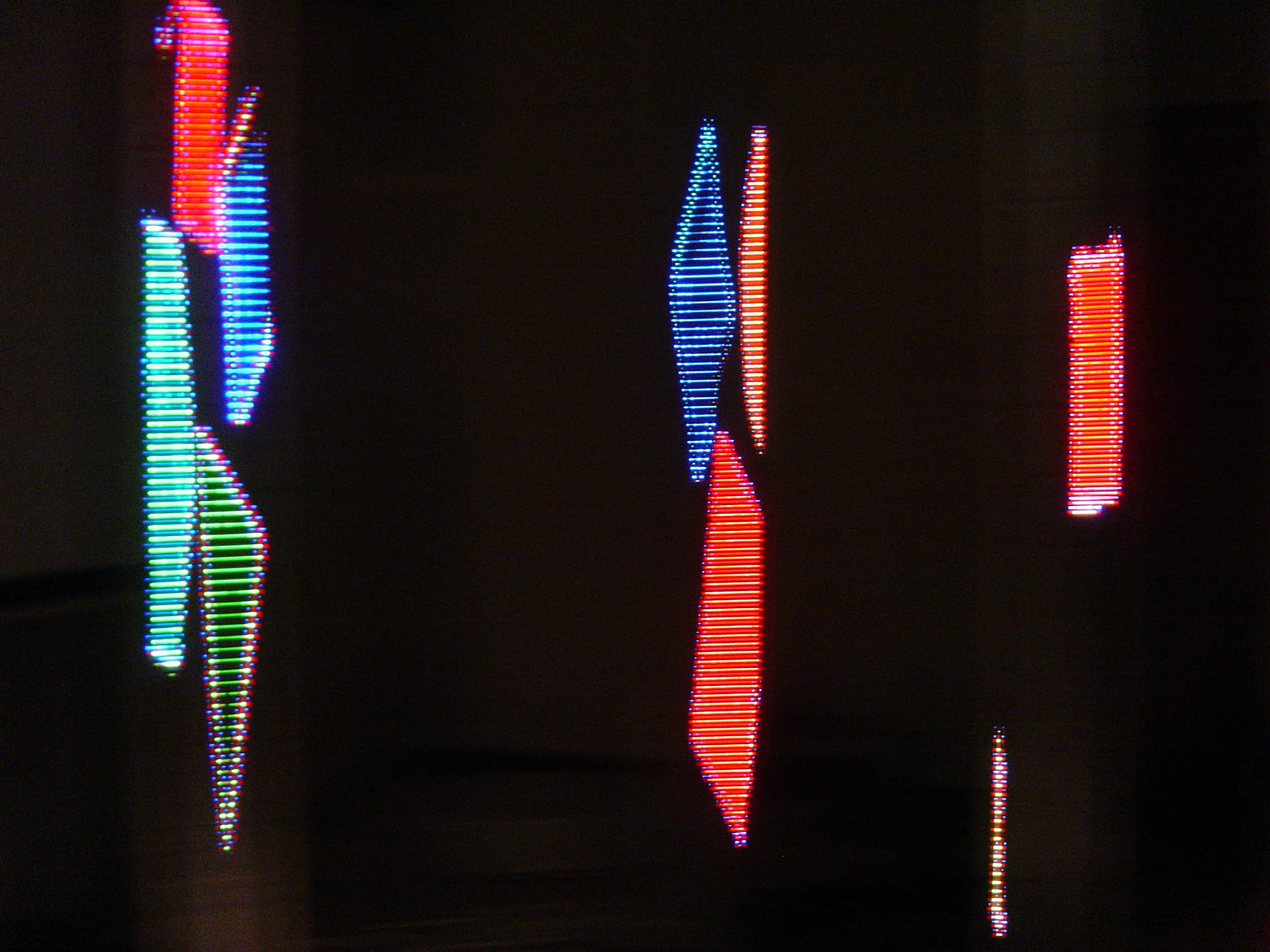Saccade-based Display
Developed by Junji Watanabe and Hideyuki Ando
The mechanism of the Saccade-based Display uses features of perception associated with eye movements. In reality, its manifestation is a tube of LED lights that flicker at certain intervals and can be programmed to generate discrete images which become visible as one’s eyes move around and across the LED display. However, as soon as your eyes stop moving and you gaze directly at the display the images disappear leaving what appears to be a flickering light source.
Fore more details on the mechanism see Saccade-based Display under ‘Researches’ at Junji WATANABE Research in Progress.
The visual challenge posed by the display is that one cannot look at the projected image at any length and it is this very characteristic that I am curious to explore. The virtual existence of the temporary image limits the viewer, in terms of the degree of control over the frequency and the distortion of the projected images, as they are only viewable while induced by eye movement.
The aim of the designs for the Saccade-based Display is to make the images memorable at a glance. In making decisions on colour and forms I relied on my previous experience of the experiments conducted in Japan with Dr. J. Watanabe, a co-inventor of the Saccade-based Display, who advised me that shapes constructed from linear elements leave a more memorable impression as an image than solid blocks of colours.
While conducting this initial experiment photographs were taken as a record of the event with a digital camera by moving it in front of the LED to imitate the eye movement capturing the image being generated.
Below: Experiment using Saccade-based Display, 2007
Following the initial experiment I sought to create shapes that are more instantly recognisable but also abstract and direct, that could be described as ‘flower like’, ‘spiky sun’ or ‘star in circle’. Colours were chosen to give maximum contrast and support the linear elements of the shapes so they would stand out from one another.
Below: images created for Saccade-based Display following the design concept as described above
Having considered the design of compositional elements, my artwork is now developing towards achieving visually intriguing and stimulating images that create an aesthetic experience for viewers, an experience which will leave a lasting impression and allows for greater interpretation.
I then invented the process of using the photographic images sequentially and layered to create a counterpoint to the momentary way we experience the images projected by Saccade-based Display, the resulting Polyluminous Imaging rendering it into something one can fix an eye upon, look at and explore.
Camera was used with an extended shutter speed (1/4 – 1/8 seconds) and is moved during this exposure through space and across the LED display, capturing randomly the Saccade image generated at that time.



















